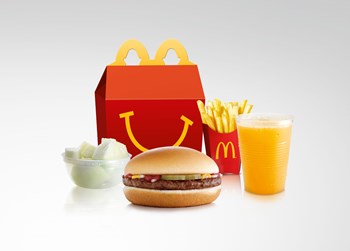In economics, one of our favorite concepts is tradeoff. In a world of pervasive scarcity, every choice has a cost. Recognizing this fact about the human condition should lead us to see the world in terms of marginal benefits and costs. As we think about how to allocate our time and resources, we need to ask whether devoting the next unit of one those things toward a goal is really worth more than what will be given up.
Suppose you are a college student with an exam tomorrow morning and midnight is approaching: You are trying to decide whether or not to keep studying. The later it gets, the smaller will be the additions to your knowledge from each 15 minutes of studying (the “marginal benefits”) and the greater will be the value of the sleep you sacrifice (the “marginal cost”). At some point the cost of sleep forgone will exceed the gains from 15 more minutes of studying and you will close your book and go to bed.
What would likely not make sense is staying up all night to keep studying. You might be fooled into thinking this would be the best choice because, after all, you really want to do well on the exam. The smart student, however, recognizes that both studying and sleep are inputs for doing well and that just as it would be silly to sleep and not study, it would be equally irrational to study and not sleep.
Economists refer to doing all of one thing and none of another, oblivious to marginal costs and benefits, as a “corner solution.” (This name comes from the production possibilities frontier graph on which a “do one thing only” solution is indicated by the “corner” where the curve meets the relevant axis.)
Corner solutions are almost always bad ideas because we can usually do better by doing less of the one thing and reallocating our resources in some other way that will bring greater net benefits — that is, by making tradeoffs.
In the Earthquake’s Aftermath
We can see this principle in action as we think about the rebuilding in Japan after the recent earthquake and tsunami.
It would be tempting to say that new structures should be able to withstand a 9.0 earthquake, and perhaps a tsunami, so that we never see a repeat of such destruction. But when we bring the economic way of thinking to this question, we have to at least ask whether doing so would be a corner solution. In fact, it’s entirely possible that requiring that new buildings be able to withstand a 9.0 quake would actually kill more people than it would save.
Bringing buildings to that level of protection would require a great deal of resources. The marginal costs of increased earthquake protection are certainly above zero and perhaps rise dramatically as we get into the 8.0 or 9.0 range. It’s also the case that the marginal benefits of additional protection decline at some point, if only because the odds of an earthquake shrink quickly as we climb the Richter scale. So there is an optimal amount of earthquake protection where, to the chooser, the additional benefits are just equal to the additional costs — and it might well be below the level at which buildings could withstand a 9.0 quake.
Put differently: Rather than devote all those resources to protection from another extremely unlikely 9.0 quake, why not use them to do other things that might save more lives? For example, it’s possible that the resources required to upgrade buildings from 8.0-proof to 9.0-proof would be better used to buy mosquito netting against malaria in Africa, or to invest in AIDS research, or to help provide cleaner water around the world. Each of those uses of resources might well save more lives for the same cost than would the maximum earthquake-proofing of Japanese buildings.
Centralization versus Decentralization
The irony is that to the extent resources are allocated by a central authority spending other people’s money collected by force, marginal costs and benefits aren’t likely to be taken into account. In contrast, decentralized price-guided allocation through private property — and the responsibility that follows ownership — is far more likely to produce wiser decisions at the margin.
Do I know that more lives would be saved by not making the buildings safe from 9.0 quakes and using the resources elsewhere? No, I don’t. But I do know that, in Tom Sowell’s words, “There are no solutions, only tradeoffs.” What Sowell means, and the lesson I want to impart, is that the wise use of resources cannot eliminate all bad things in the world, so we need to ask whether the sacrifice at the margin isn’t greater than the gain. That question puts the economic way of thinking in the service of humanity and probably saves lives.

